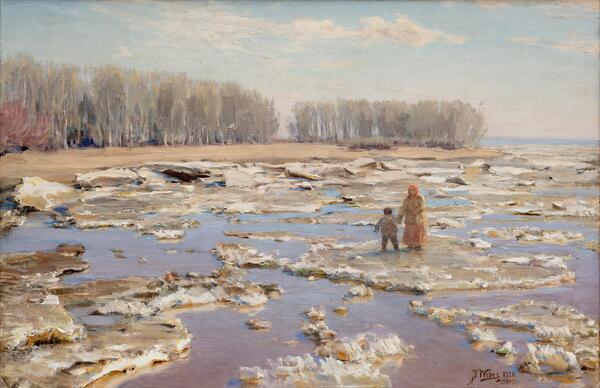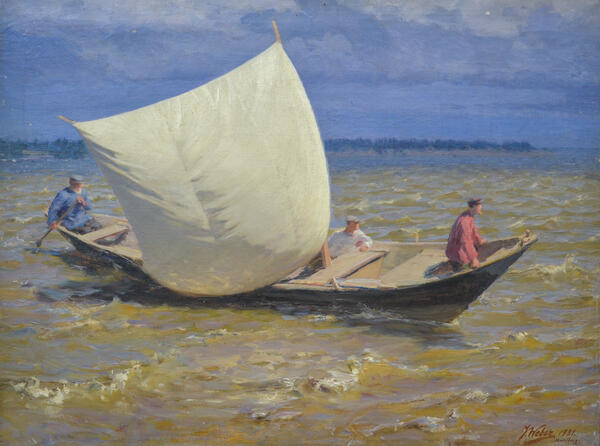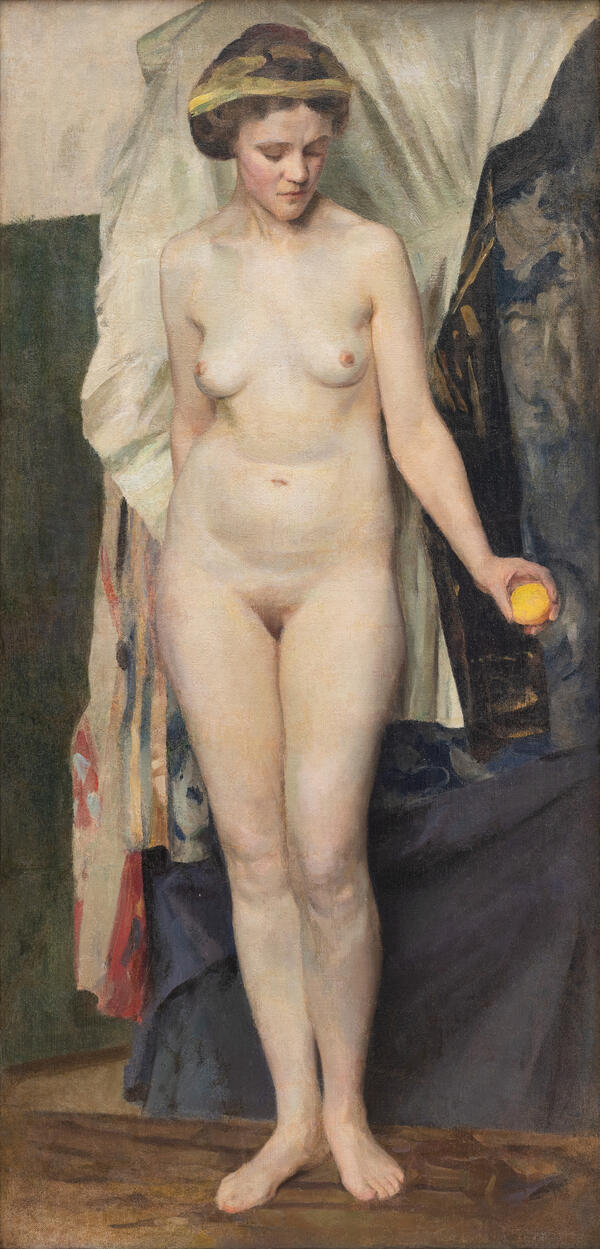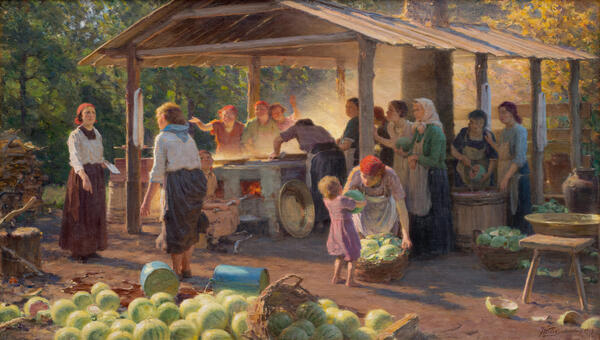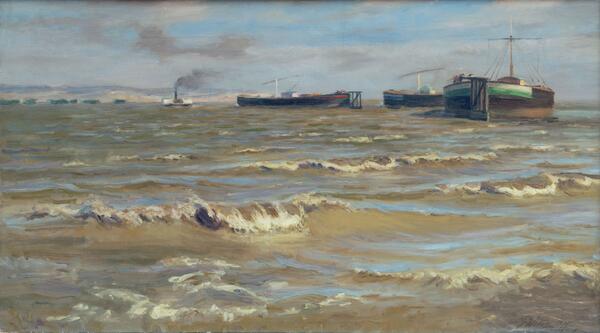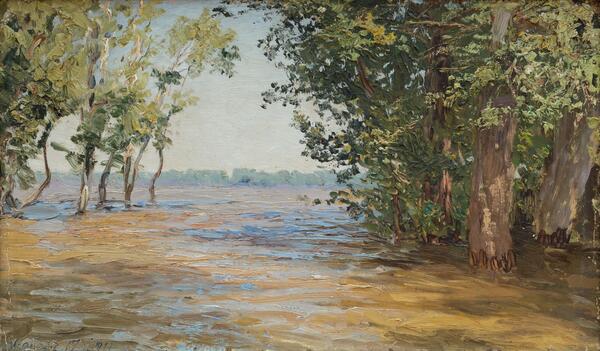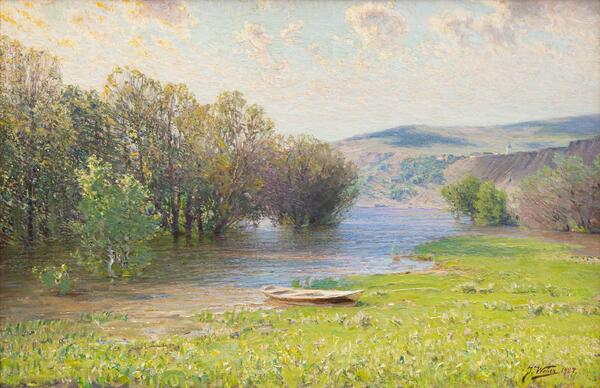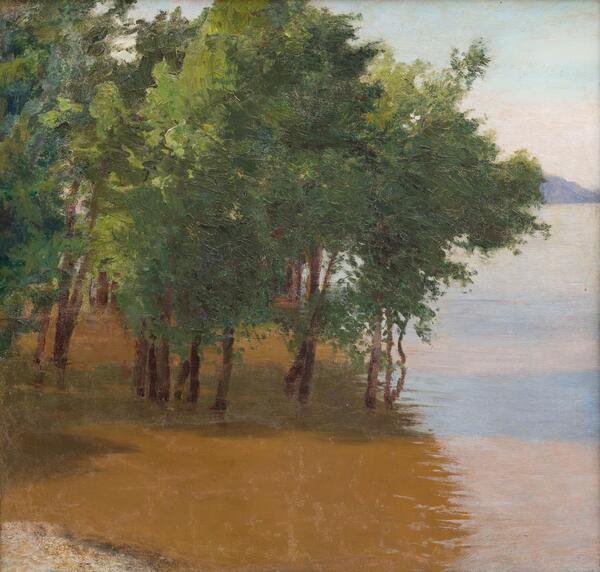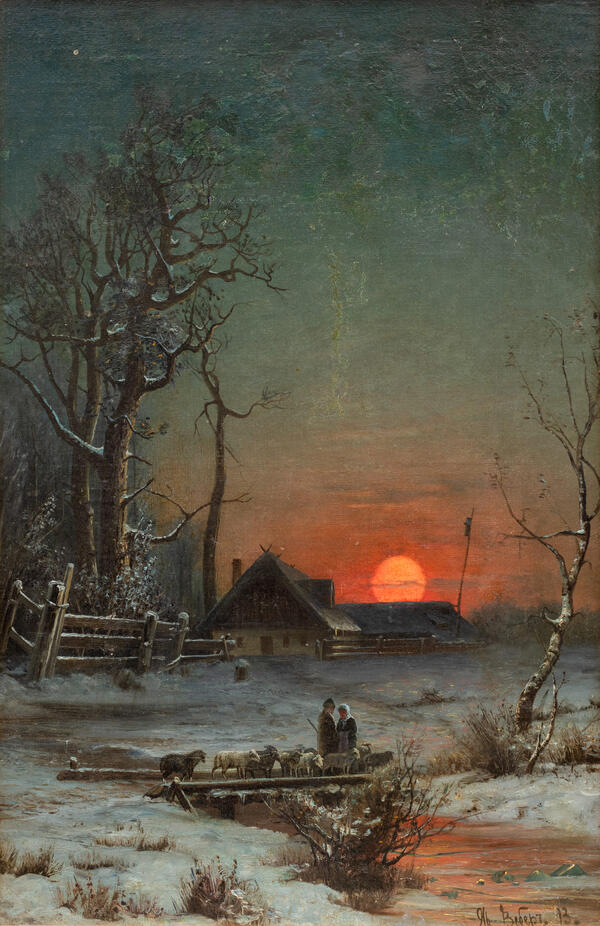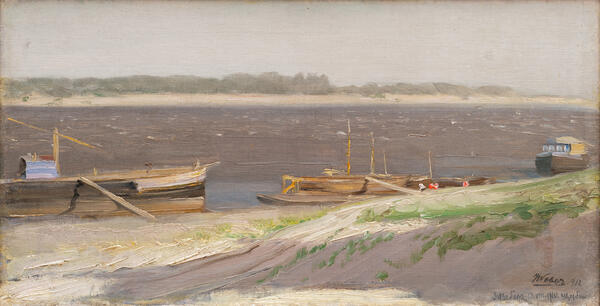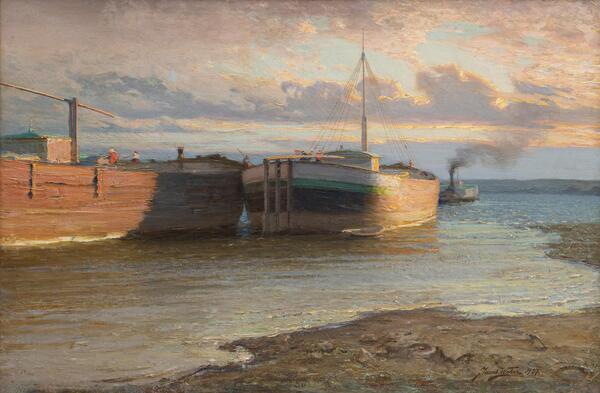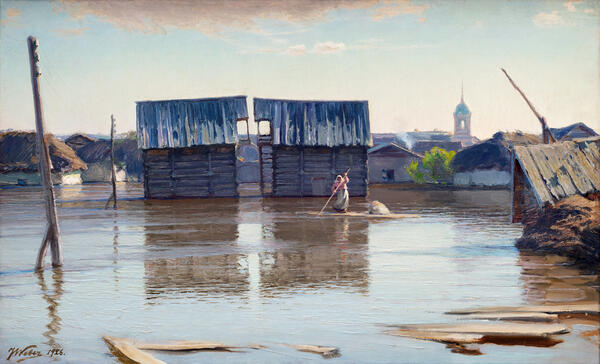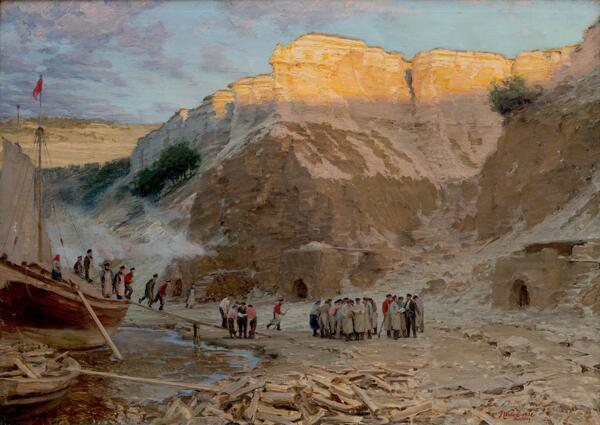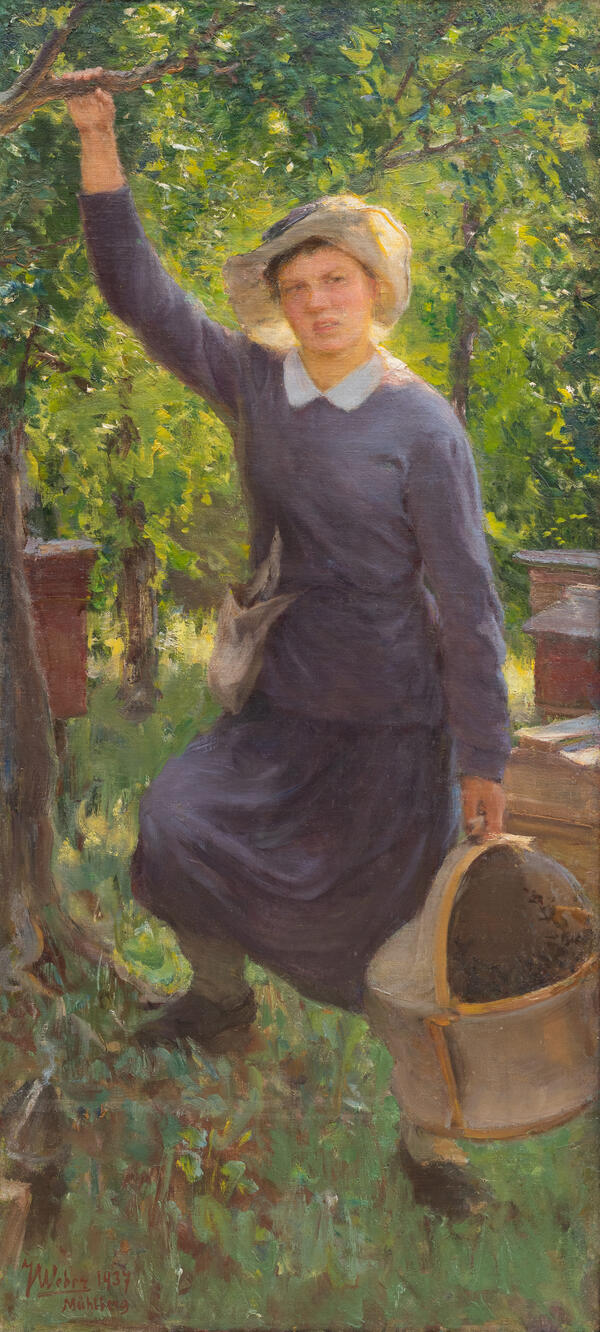The artistic environment of Saratov, which surrounded the young painter from 1892 to 1897, was of great importance for his professional development. Working as a copyist in the Saratov Art Museum, Yakov Weber achieved significant results in this field. For his success in copying, the newly-minted artist was allocated a furnished room in the museum building. Subsequently, Weber was commissioned to paint from life, which was very important for him. The creative incentives that the artist experienced in Saratov determined his path in life and, to a large extent, the course of his quest. Yakov Weber gradually moved from only copying artworks to painting from life, exhibiting his works in an art store, where they quickly sold out. The future artist mastered the principles of landscape painting and the traditions of realistic art.
The landscape “Moonrise” featuring a country road running towards the horizon is displayed in the exhibition of the Engels Museum. It is executed in a realistic manner and depicts the outskirts of the German village of Rovnoe. This is where the artist would return to create, drawing, sketching, painting studies and landscapes of his native countryside. The motif of the road and the rising moon became one of the favorite ones for the landscape artist. The large canvas is characteristic of his early work; it depicts a road stretching away into the distance, a quiet evening and the simple life of villagers. It is distinguished by its modest coloring, naturalistic effects, and interest in the everyday details of rural life. The painting evokes a poetic mood. All this testifies to the implicit influence that the art of the early Peredvizhniki landscape painters had on Weber.
A notable role in the creative life of Yakov Weber
was played by the public organization Saratov Society of Lovers of Fine Arts.
Among the factors that ensured the artist’s further creative development were
the fundamentals of understanding the laws of painting and drawing, the skills
of compositional thinking acquired through rapprochement and communication with
Hector Baracchi, Vasily Konovalov, and Victor Borisov-Musatov, exposure to the
art of the masters of the past in the Radishchev Museum, as well as his extraordinary
craving for art.



